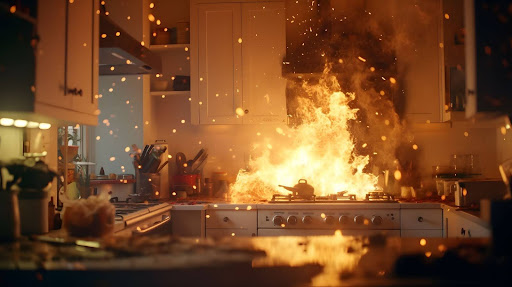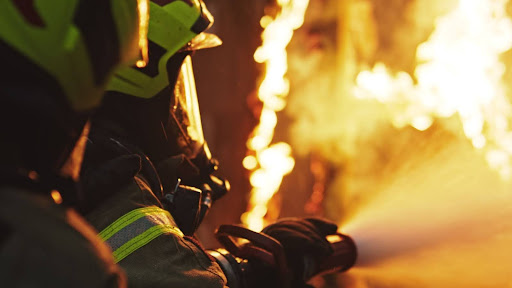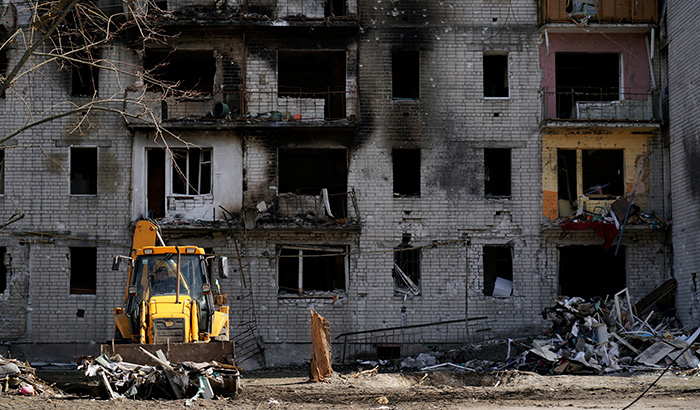Experiencing a house fire is traumatic and often leaves people grappling with a range of emotions — preparation helps you navigate these challenges.
Most Americans don’t realize that small house fires are the most common disaster in the country. In the aftermath, you need a clear plan of action to help you navigate the arduous road to recovery.
If you’ve experienced unforeseen challenges due to a fire, we’re here to help! It might be confusing knowing where to start and what to do first.
This guide outlines the essential steps to take after a house fire, providing a comprehensive roadmap to assist you in rebuilding your life and property as quickly as possible.
- Make a Plan and Practice, Practice, Practice
We’ve heard the phrase, “stop, drop, and roll,” since elementary school, which is helpful if your clothes catch fire — but how do you fully exit a burning building safely? The best way to survive a house fire is to prepare for the worst.
First, check your smoke detectors. Smoke detectors are the most efficient way to learn of a fire and how far it has spread. Inspect them monthly and change batteries as needed to ensure they always work properly.
Next, make of plan for how to escape from every room of your home and teach it to all your household members. You should also establish a family meeting spot outside your home and a family emergency communications plan. Make sure everyone knows how to call 911 and who to contact if they can’t find one another.
Finally, practice! Put your plan into action at least twice a year. Test the smoke detector, and alert everyone that they must exit the building swiftly. Practice meeting at your family meeting spot and pretend to dial 911 and your emergency contacts.

- Escape Safely
Safety is the top priority during and after a house fire. If you witness a fire, exit the building immediately. If the fire is wastebasket-sized or smaller and you know how to use a fire extinguisher, you can try to extinguish it. If you can’t put it out in 5-10 seconds, evacuate and warn others on your way out. If time permits, close the doors behind you as you exit.
Use doors as your roadmap as you navigate through and out of a burning building.
Begin by using the back of your hand to touch the door and doorknob. If you sense warmth, refrain from opening it. Next, inspect the vicinity of the door for indications of smoke or heat. If you notice glowing embers or detect black smoke seeping through the door, you should not open it.
If no other exit is available and you see smoke, open the door slowly, move to a crawling position, and quickly navigate to the closest exit. Cover your mouth with your shirt, and do not waste time picking up valuables — fires can get out of control in less than 30 seconds. Proceed to your meeting point and call for help.
Once you’re on safe ground, check in and make sure all the other victims are alright. This is also a good time to contact family members or close friends who may not have been with you. Let them know what happened and the status of everyone who experienced the fire. The support of your close circle will be indispensable as you begin the fire recovery process.
- Call for Help
Once you know everyone is safe, your next move should be to call 911 for emergency help. The first responders who come to your home will concentrate on keeping everyone safe and saving the structure of your home itself. Contact your insurance company to report the incident and initiate the claims process.
- Learn if Your Home Is Safe To Enter
Do not re-enter the property until the fire department has deemed it alright to do so. Even after receiving the green light, exercise caution as you navigate these potentially hazardous conditions. Wear PPE gear and don’t linger in the environment for longer than necessary.
Focus on retrieving valuables and important paperwork such as birth certificates and medical records. Do not bring any food, medications, or cosmetic items with you — the presence of smoke or high heat lingering in these items can be hazardous. Only salvage prescription medication packaging so you can have them replaced.
- Document the Damage
You’ll need evidence to navigate that dreaded phone call with your insurance agent. You need thorough documentation of everything to file a claim. If the home is safe to re-enter, take photos of each room, capturing the extent of damage and the specific items affected. We also recommend creating an inventory of your belongings as you prepare for any natural disaster.
- Secure the Property
After a house fire, your property might be vulnerable to further damage from weather, vandalism, or unauthorized access. If the property is safe to enter, take immediate steps to secure the premises. Board up any exposed windows and doors and install temporary fencing to prevent trespassing.
Securing the property helps protect it from additional harm and maintains the integrity of the insurance claim.

- Determine if Your Home Is Salvageable
A house fire can reach over 1,100 degrees Fahrenheit in less than four minutes. This intense heat causes significant structural damage to your home. Your insurance agent will likely send out an adjuster to evaluate the extent of the damage to your home. They will ultimately decide if you can save it or if you need to rebuild it.
If your home has been damaged but not destroyed in a fire, using a professional fire damage clean up team is necessary. Heat, soot, and smoke can damage your possessions and pose serious health risks. On top of that, you might also need water and sewage mitigation services.
- Call a Restoration Company
After calling your insurance company and discussing the next steps, they’ll tell you when to call a fire damage clean up company. These fire remediation teams will help with immediate concerns like water damage, securing your home, and ventilation. These teams are also experts in guiding their clients through the recovery process, putting them at ease.
Your restoration company of choice will coordinate with your local fire department officials to start the work quickly and safely. The restoration company will send an emergency response team to evaluate the extent of the damage and create a plan for fire remediation services. They’ll remove water from the property where possible to reduce further damage.
One of the most critical steps restoration companies help with is ventilation. Using industrial-strength fans, the team will clean the toxins and volatile organic compounds (VOCs) from the air. This will reduce the amount of smoke damage your home is exposed to.
Restoration companies will also use specialized cleaning agents and techniques to remove all traces of smoke from your property. Smoke is often very damaging to your home and belongings long after the fire has been put out, so this is one of the first actions your trusted fire damage clean up team will take.
- Find Temporary Shelter
No matter the size of the blaze, you’ll need to stay somewhere else for at least a few days. Even small fires need to be inspected, and you should never stay in a house with excessive smoke damage. Your property needs to be thoroughly cleaned of soot, smoke, and ash before it’s safe to reoccupy.
Fortunately, most insurance policies will help cover the costs of accommodations, food, and clothing during the fire remediation process. Check with family and friends who might be able to help you find a safe place to stay while restoration services are in progress.
- Begin the Rebuilding Process
If rebuilding is necessary, your insurance company will help you find the right team to guide you through this process. This stage can begin once the initial assessments and documentation are complete. Your agent will help you collaborate with contractors and architects to develop a comprehensive plan for reconstruction.
Obtain necessary permits or approvals and establish a realistic timeline for the restoration of your home. Regular communication with professionals involved in the rebuilding process is essential to stay informed about progress and address any unforeseen challenges. The goal is to rebuild a secure home in which you can feel comfortable and safe.
Black Diamond Restoration Can Help
Black Diamond Water Damage and Disaster Restoration provides the best house fire damage restoration services for you and your home. Our commitment to providing top-notch service has propelled us to be an industry leader. We are based in Murray, Utah, and proudly serve Salt Lake City and the surrounding areas.
Fire damage renewal from Black Diamond Restoration is efficient, effective, and dependable. Our licensed and certified professionals will help you through the restoration process, restoring your home to meticulous standards. To learn more, contact Black Diamond Restoration today.
toto slot






